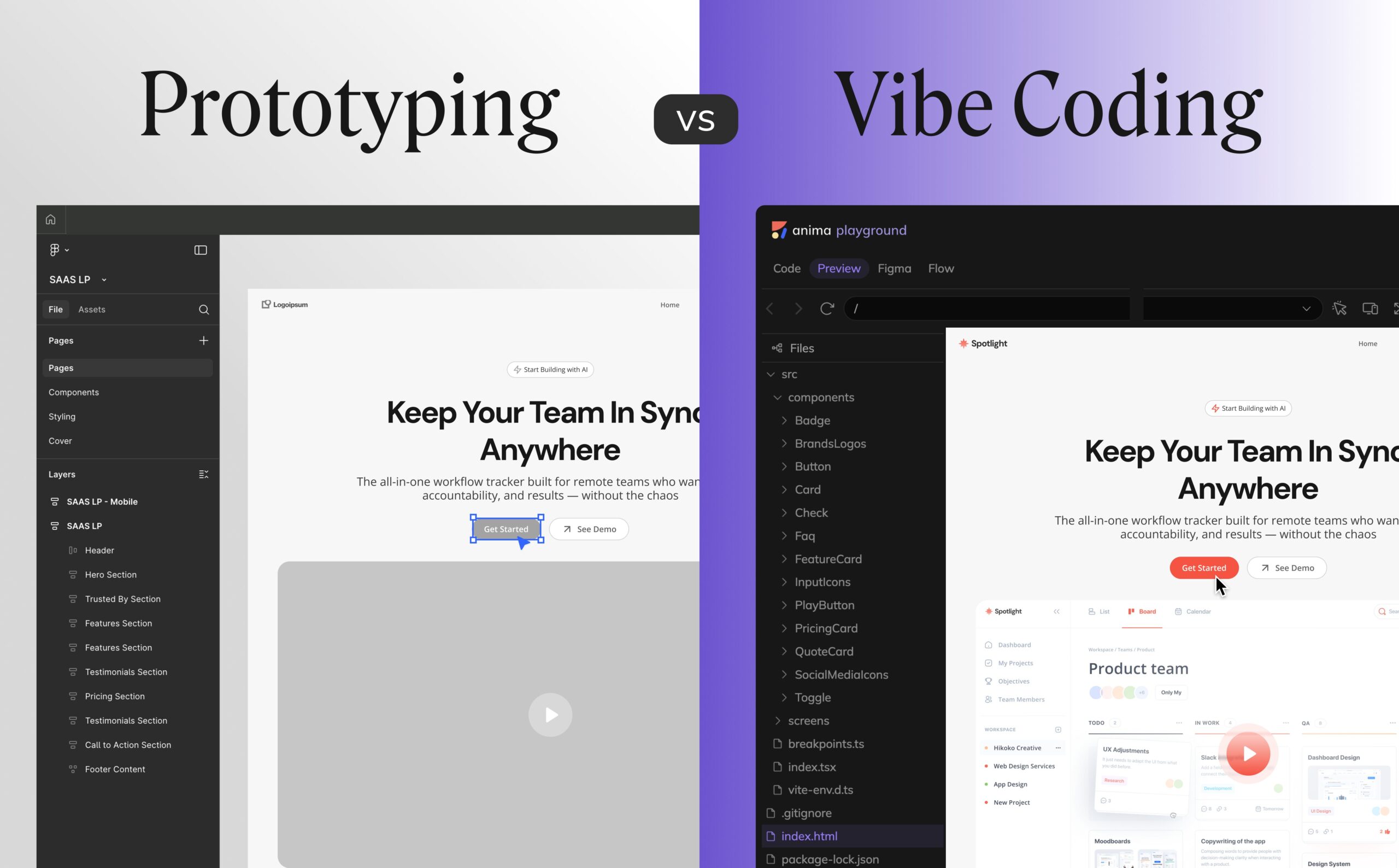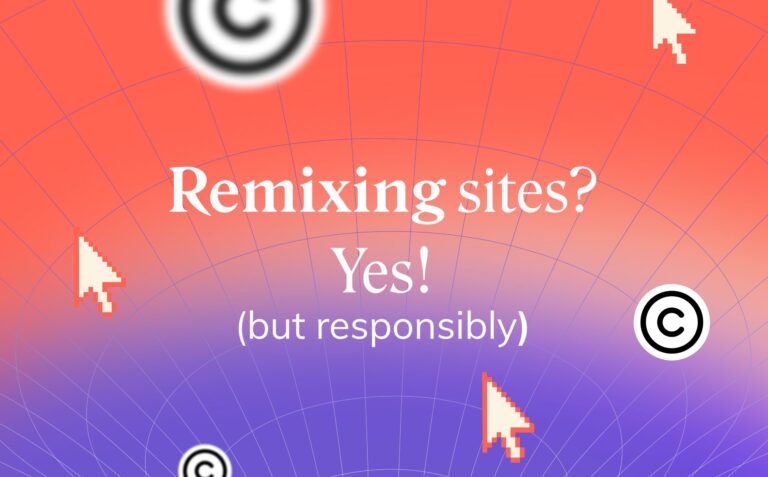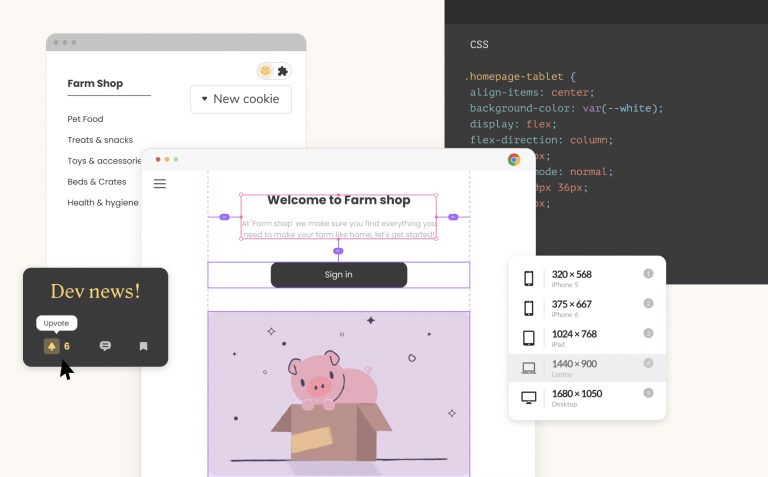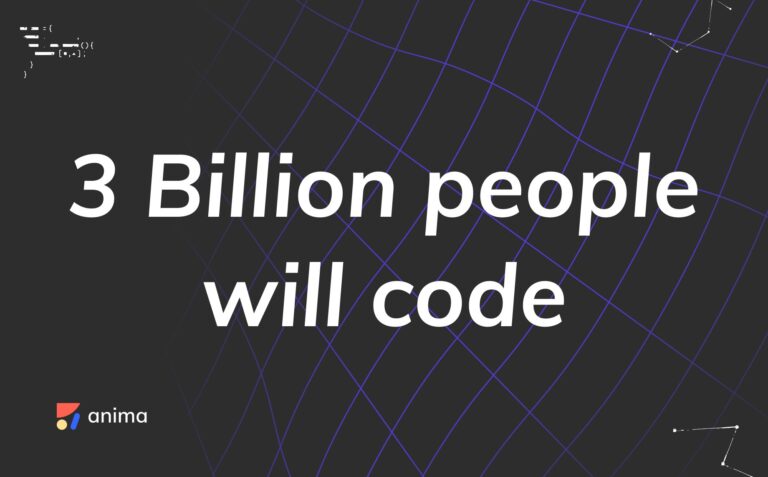Is vibe coding the new prototyping?4 min read
Reading Time: 3 minutesVibe coding vs prototyping
Prototyping has been a core part of digital product design for decades. But as tools and workflows evolve, many teams are shifting away from static mockups toward something more interactive, immediate, and flexible: vibe coding.
In this article, we’ll break down how vibe coding compares to traditional prototyping, when and why teams are making the shift, and how it fits into modern product workflows—especially when using tools like Figma, AI coding agents, or live websites.
What is traditional prototyping?
Traditional prototyping refers to the process of creating interactive mockups—usually static screens linked together to simulate a user flow. Over the past decade, prototyping tools have evolved significantly to support modern product teams:
-
Axure (2002): one of the earliest dedicated prototyping tools, enabling interactive wireframes and flow diagrams -> functional but not really visual
-
InVision (2011): popularized linking static screens into clickable prototypes for quick stakeholder reviews -> static but visuals
-
Figma (2016): introduced collaborative, web-based design with built-in prototyping, auto layout, and real-time editing -> both visuals and functional but only for designers
These tools made prototyping faster and more accessible, but they still revolved around design artifacts. The process usually looked like this:
- Designers build screens in Figma or Sketch
- Mockups are linked with transitions to simulate interactions
- Prototypes are shared with stakeholders or tested with users
- Designs are handed off to developers for rebuilding in code
This workflow is still widely used today, especially in design-led organizations. But it has limitations—especially when speed, iteration, or real behavior matter.
That’s where the next wave begins: vibe coding: visual, functional and for everyone. It blurs the line between prototype and a live product.
Is vibe coding just a trend?
Vibe coding isn’t just a trend—it’s the next chapter in the evolution of design-to-code. For years, teams have tried to bridge the gap between design and development. Tools like Anima pioneered this space by turning high-fidelity designs into developer-friendly code.
Vibe coding builds on that foundation. It skips the static mockup phase and moves straight into working code—often using AI, reusable components, or tools that turn design artifacts or live websites into editable, production-ready output.
Instead of simulating an idea, you’re building a functional version from day one—often directly within the visual language of your brand. With on-brand vibe coding, you’re not just prototyping quickly, you’re doing it with your company’s real components, colors, and design system baked in.
With tools like Anima Playground, you can generate clean HTML or React code—whether starting from a Figma design or by cloning a live site. In both cases, you can adjust content, layout, and styling using plain English prompts, and work directly with production-grade code.
As product teams push for faster iteration, reuse, and tighter handoff, vibe coding is becoming less of a trend—and more of the new standard.
Vibe coding vs prototyping: side-by-side comparison
| Traditional prototyping | Vibe coding |
|---|---|
| Mockups created in Figma or design tools | Real UI generated from code or components |
| Static interactions and transitions | Fully interactive and responsive behavior |
| Requires handoff to developers | Starts with code developers can refine |
| Designer-driven | Accessible to PMs, founders, and engineers |
| Often thrown away | Reusable and production-ready |
Why teams are shifting toward vibe coding
Design systems used to be confined to Figma libraries. With on-brand vibe coding, teams can now generate code that aligns with existing styles and components—making it easier to test, build, and ship without going off-brand.
Some common reasons teams make the shift:
- They want prototypes that reflect actual product behavior
- They’re tired of handoff delays or misalignment
- They need a faster way to test ideas—especially for internal tools or MVPs
- They want code to be the source of truth, even in early stages
Prototyping isn’t dead
But it’s evolving. As tools improve and product cycles shorten, vibe coding is becoming the go-to method for teams who want to move faster, build in context, and reuse what they create.
Whether you’re starting from a Figma file, a live site, or a simple idea, vibe coding gives you a head start—with code that’s ready to ship, tweak, or test.
Want to try it? Explore Anima Playground, where you can go from Figma to code—or clone a site and start building.

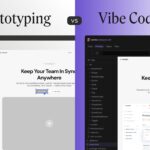
 Figma
Figma Adobe XD
Adobe XD Blog
Blog